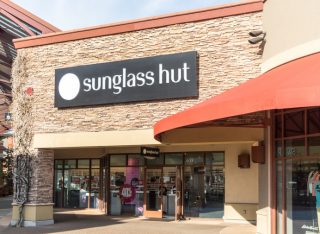The collapse of negotiations over a prime Queen Street retail location – aired this month in the Supreme Court – illustrates once more the conundrum posed to landlords and leasing agents with the wording of letters of intent.
 Global eyewear retailer, Sunglass Hut had agreed with all landlord demands, except for rent, to renew the occupancy of its 60m2 “flagship” Brisbane store at the corner of Queen & Albert when its lease expired in January.
Global eyewear retailer, Sunglass Hut had agreed with all landlord demands, except for rent, to renew the occupancy of its 60m2 “flagship” Brisbane store at the corner of Queen & Albert when its lease expired in January.
The terms – contained in a letter of offer prepared by landlord’s agent CBRE that expressed all commercial stipulations and special conditions – allowed for gross annual rent of $725,000 ($12,100/m2) plus GST over a five-year term. The letter of offer envisaged a formal lease but was ambivalent as to whether its execution was a condition precedent to the creation of the tenancy.

Hut offered an annual rent of $526,436 ($8,775/m2) to which CBRE responded – after the lease had expired and during the holding under the period – that the minimum the landlord would accept was $575k.
In a counter play that its real estate manager was to soon regret, the eyewear retailer – which was founded in Miami and is now part of the Italian-based Luxottica Group – asked that the landlord consider if $550k would be enough. Without responding to that proposal, CBRE notified the tenant that an offer from a third party at the $575k figure, had been received.
By return e-mail, the accessorisor’s real estate manager notified CBRE that it would accept the 575k offer and requested that they “send thru the appropriate paperwork to formalise this arrangement”.
On 29 March CBRE delivered the bad news that the landlord had decided to proceed with the alternate tenant. A “what would it take” conversation then ensued with CBRE proffering they “would get the landlord to accept $600,000 gross with 5% increases”.
Hut agreed to the higher rent on the spot and on 20 April, CBRE notified acceptance saying they “will prepare formal lease documentation urgently”. A week later on 27 April, CBRE bore more unfortunate tidings: “There has been some confusion over your offer [and] … the owner had already accepted another offer in writing and feels he has to honor that agreement – albeit at a lower gross rental”.
Not to be outdone, the eyewear house filed for specific performance and an interlocutory injunction and four days later the matter was heard.
While the ultimate question – whether or not the communications between the parties constituted a binding lease agreement – will be determined at trial, the landlord asserted that the correspondence trail was insufficient to satisfy requirements of the Property Law Act that any sale or lease in land (or a memorandum or note thereof) must be in writing signed by the vendor/lessor or their lawfully authorized agent.
The court held differently: CBRE’s letter of offer and its acceptance email “fit together to make a coherent whole” and may well be sufficient to evidence a concluded agreement.
And although not “signed by the landlord”, CBRE’s acceptance email was – because the requirements of the Electronic Transactions (Queensland) Act 2001 [1] had been met – taken to have been duly signed by them as the PAMDA authorized agent for the landlord.
Thus the lens merchant did enough to convince the court that on balance, it should be granted an injunction to remain in possession of the premises at the higher rent until all issues are decided at a trial where the content and consequences of conversations and correspondence will be considered anew. As will the status of the “agreement” reached with the alternate tenant. Good fortune to both litigants!
Which brings me back to my # 1 point. Should letters of intent express themselves as being binding immediately upon signing or should they specify that they are subject to final agreement to be documented by way of formal lease?
I favour the latter but readers may have a different view and not every situation is the same. Regardless of your preference, the document should always be crystal clear one way or the other – final & binding on the one hand, or not binding until formal lease signed on the other – so that unnecessary disputation can, where possible, be avoided. After all there are better things to spend money on: luxury sunglasses for example.
And my # 2 point relates to the glimpse we have gained into the economics of the sunglasses industry which goes some little way to explain why they are so %@#*& pricey!
(a) a method is used to identify the person and to indicate the person’s approval of the information communicated; and
(b) having regard to all the relevant circumstances when the method was used, the method was as reliable as was appropriate for the purposes for which the information was communicated; and
(c) the person to whom the signature is required to be given consents to the requirement being met by using the method mentioned in paragraph (a).




0 Comments